
Product Features
1.Coolmay 3G series touch screen PLC integrated machine adopts high-precision K-type thermocouple closed-loop control, and the temperature control accuracy is within ± 3 ℃;
2.Multi-stage constant temperature control is realized through PID, and the temperature is increased according to the specified slope without overshoot;
3.Independent three-temperature zone temperature control system, multiple sets of temperature control parameters;
4.Through the curve, it can visually display the temperature changes of multiple sections, and can store multiple sets of heating formulas;
5.The temperature parameters include password protected, with multiple safety / alarm protections against arbitrary modifications.
Summary:
This article mainly introduces the application of ShenZhen Coolmay Technology touch screen all-in-one machine in the BGA rework station, which realizes precise temperature control, can rise to the set temperature value without overshoot quickly, and it is suitable for various temperature control. Intelligent operation, simple parameter setting without PID parameter setting.
Introduction
The BGA rework station is mainly controlled by three independent temperature zones. The entire heating process can be roughly divided into preheating and preheating stage-insulation section-heating section-welding 1 section-welding 2 stages --- cooling stage --- to complete the entire heating process, the process is to control the temperature rise and constant temperature, because of the physical characteristics of the circuit board and soldering needs, you also need to control the slope of the temperature rise, the temperature rises to the set value according to the preset slope, and does not exceed the value of the overshoot allowed range. If there is an overshoot allowed range, it may cause damage to the electronic components of the circuit board, so the overshoot allowed range is not allowed in the whole process. PID algorithm will be used to achieve the constant value control of PLC. However, the traditional PID algorithm needs to set parameters, in order to achieve without overshoot, PID parameters must be set repeatedly to achieve, which has high requirements for debuggers. Using Coolmay’s touch screen all-in-one machine as the controller and a dedicated control algorithm can achieve the boosting process without overshoot, and the parameters are simple to adjust and easy to use.
Description of BGA rework station
BGA rework station adopts Coolmay all-in-one machine as the controller to heat the upper and lower temperature zone and IR preheating zone separately. During the heating process, the fan is always running, and the all-in-one is heated by turning on the resistance wire through the PWM period. Through the feedback of the actual temperature through the three-way K-type thermocouple, the Coolmay All-in-One adjusts the PWM duty cycle according to the actual temperature feedback to control the temperature rise and fall. The temperature increase must control the slope of the temperature increase, which is also the difficulty and key point of the BGA rework station.The upper and lower temperature zones are heated by hot air, and the IR preheating zone (350 * 260) is infrared heating. The temperature is precisely controlled at plus or minus 3 ° C. The upper and lower temperature zones can be set with 8-stage temperature rise and 8-stage constant temperature control, and can store 50 groups of temperatures The curve can be called at any time according to different BGA. The BGA chip can be locally heated with hot air, and at the same time, the bottom of the PCB board is heated by a large-area infrared heater, which can completely avoid the deformation of the PCB board during the maintenance process. By selecting, the upper temperature zone and the lower temperature zone can be used separately, and the energy of the upper and lower heating bodies can be freely combined. The IR preheating zone can adjust the output power according to the actual requirements, so that the PCB board can be heated evenly without deformation. The external temperature measurement interface realizes the precise detection of the temperature, and the temperature curve of the actual collected BGA can be analyzed and corrected at any time.
The solution is to use a K-type thermocouple as feedback to make the BGA rework station form a closed loop, control the output duty cycle, and draw a block diagram. Adjust the response speed to the fastest, and then increase the SV target value according to the slope, so as to achieve the temperature increase according to the set slope.
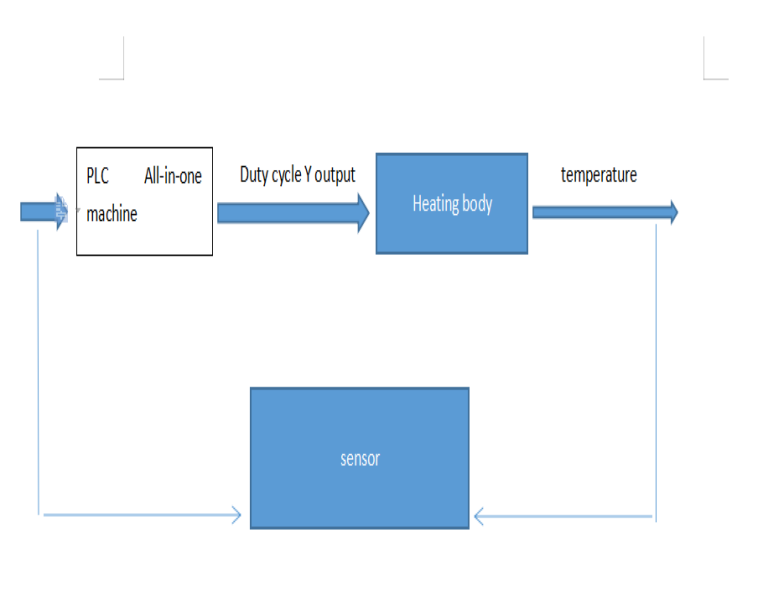
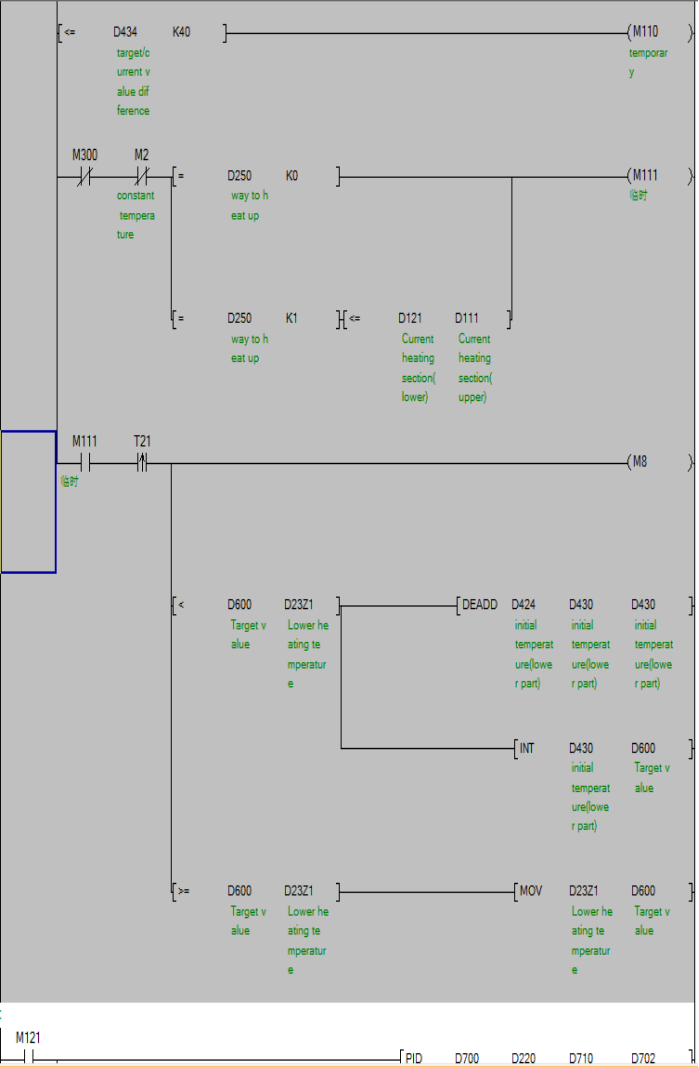
Control curve:
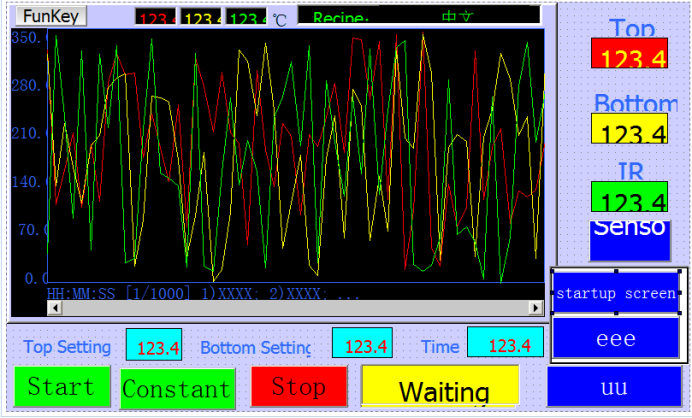
The temperature curve of the Coolmay touch screen all-in-one machine conforms to the control index of the BGA rework station, realizing a rising curve without overshoot.
Operation interface and program
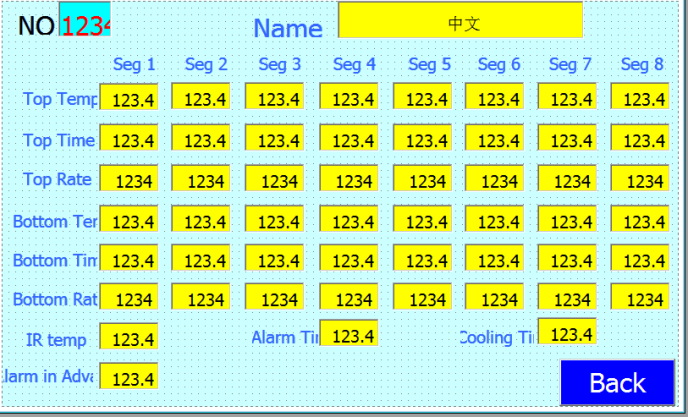

The general use process of BGA rework station
It enters the debugging interface, edit a group of heating parameters, set the upper and lower heating temperature, rising slope, constant temperature time, set the infrared heating temperature, and some auxiliary functions, advance beep time , Beep time, cooling time. After the parameters are set, click Save, call out and start heating. The debugging interface is used to set the parameters. After setting it, it is stored. When you need it next time, you can directly call it out and use it. So after debugging, you generally don’t need to enter the debugging interface. You only need to enter the operation interface to select what you need. The heating parameter group is enough.
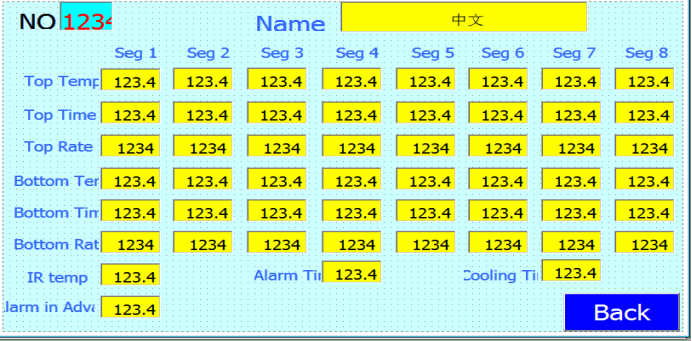
For example:
1.Preheating section (one section): After the machine program starts, the upper heating enters the heating state, the temperature starts from room temperature, and the temperature rises to 160 degrees at a rate of 3 degrees per second (slope value 3 degrees / second) (preheat Section temperature setting value), maintained at a constant temperature of 160 degrees for 30 seconds (preheating section time setting value), so far the "preheating section" work process is completed, the upper part of the heating is included in the next section, the "insulation section" work process. The lower heating starts from room temperature after the heating is started, and the temperature increases at a rate of 3 degrees per second (slope value of 3 degrees / second) to 160 degrees (the preheating section temperature setting value), and maintains a constant temperature of 160 degrees for 30 seconds (The pre-heating time setting value) At this point, the "preheating section" working process is completed, and then the lower part is heated to enter the next section, the "insulation section" working process. Infrared preheating: Set 210 ℃, which means that the infrared heating plate heats up to 210 ℃ at start up.
1.Insulation section (second section): The upper part is heated at a slope of 3 degrees / second, rising from 160 degrees to 190 degrees, and then kept at a constant temperature for 30 seconds. The lower part is heated at a slope of 3 degrees / second, rising from 160 degrees to 190 degrees, and then kept at a constant temperature for 30 seconds.
2.Warming up section (three sections): the upper part is heated according to the slope value of 3 degrees / second, after rising from 190 degrees to 225 degrees, and then keeping the temperature constant for 30 seconds. Warming up section (three sections): the upper part is heated according to the slope value of 3 degrees / second, after rising from 190 degrees to 225 degrees, and then keeping the temperature constant for 30 seconds.
3.Welding section 1 (four sections), welding section 2 (five sections), and cooling section (six sections) are the same as above. The actual temperature control process number of the system can be less than the system's maximum control number (8 stages). The actual heating process does not need to use the control end by setting the corresponding parameter of this stage to 0 to be shielded.
Practical application
The seven-inch touch screen PLC all-in-one machine has a high-resolution picture and the A8 processor runs more smoothly
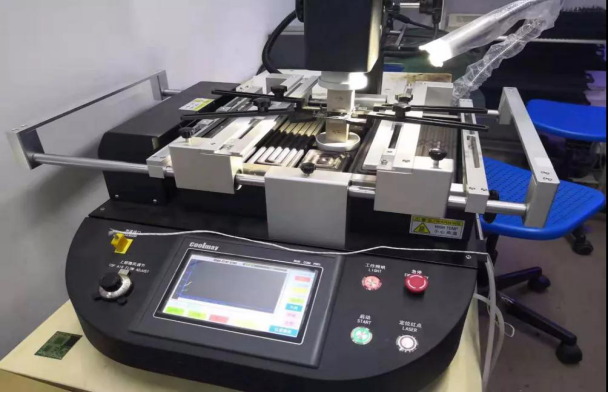
Copyright © 2021 Guangzhou Weyes Network Technology Co., Ltd. | All Rights Reserved